"Eventually, we want to sell strawberries for 500 yen (~€2.80) per box," said Hiroki Koga, founder and CEO of Oishii, as he opened today's JPFA Symposium with a bold ambition.
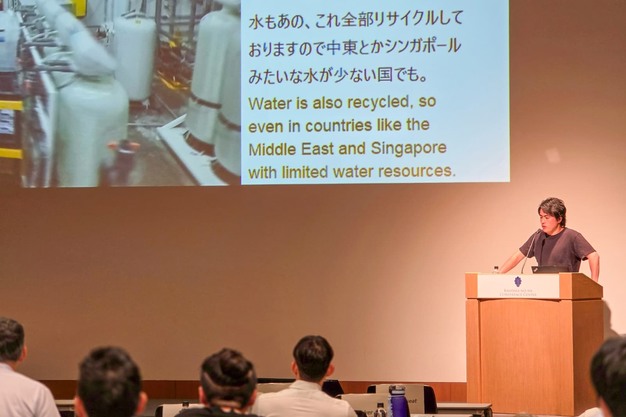 © Rebekka Boekhout | FreshPlaza.com
© Rebekka Boekhout | FreshPlaza.com
Hiroki Koga
From the early days when Oishii berries sold for $50 a box, prices have steadily dropped to $20 and now $7.99 in the U.S. market. This reduction aims to make strawberries more accessible to a broader customer base. Oishii's recently opened R&D farm in Tokyo plays a central role in this strategy, aiming to lower operating costs and strengthen the economics necessary to reach the €2.80 price point. "Our new megafarm is fully automated, runs on software and machine learning, which allows us to drive costs down massively," Hiroki explained. The economics are further supported by low energy costs, with the facility powered by hydropower and solar, generating more electricity than it consumes.
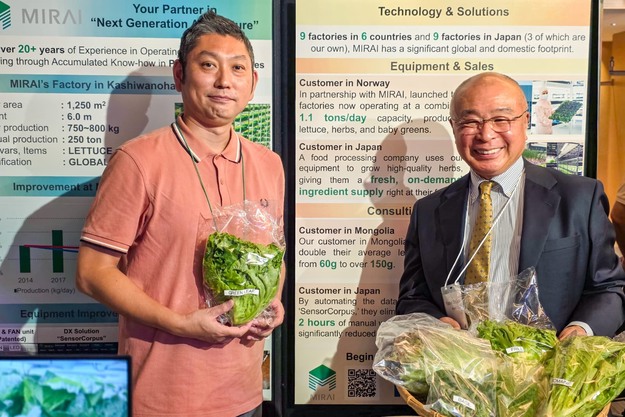 © Rebekka Boekhout | FreshPlaza.comNagateru Nozawa and Yoshio Shiina of MIRAI, a vertical farm and system supplier from Japan, showcasing some of their produce
© Rebekka Boekhout | FreshPlaza.comNagateru Nozawa and Yoshio Shiina of MIRAI, a vertical farm and system supplier from Japan, showcasing some of their produce
However, the second day of the Symposium went beyond strawberries. "Plant factories are no longer just about leafy greens. With the right models, software, and international collaboration, even tropical crops like mango or wasabi can be brought indoors. The key is to merge plant physiology with data-driven production planning; otherwise, we will not scale effectively," said Paul Gauthier, Professor at the Queensland Alliance for Agriculture and Food Innovation (QAAFI), noted at the Symposium.
The discussion also turned to crops beyond the typical vertical farming portfolio. Large-surface plants such as pineapple, papaya, and mango were highlighted as economically attractive but technically challenging. Their yields and market prices vary significantly, ranging from $680 per ton for pineapples to $1,300 per ton. These crops require more space and adaptation strategies, yet their potential for indoor farming remains high if technology continues to improve. That said, these are big projections, but would it be realistic? Time will tell…
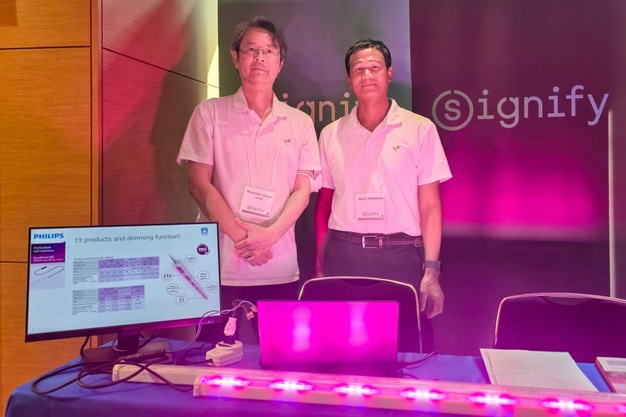 © Rebekka Boekhout | FreshPlaza.com
© Rebekka Boekhout | FreshPlaza.com
Masahiko Suzuki and Gauri Maharjan of Signify were showcasing the company's dynamic lighting system to answer the changing market demands of the Japanese market
Another recurring theme was the dynamic modeling of plants, where everything, from genetics and pest management to nutrient ratios, light recipes, and airflow, is interconnected. "If you know exactly how the plant responds, you can forecast yields, adapt crop schedules, and optimize energy efficiency," one presenter explained, showing a flow model where photosynthesis, respiration, and environmental parameters were continuously monitored.
Production planning is a frequently touched-upon topic for Japanese growers. A farm software demonstration from Macnica by Yoshiyuki Kurimoto showed how crop growth cycle data is integrated with operational models to better predict harvesting and manage labor. Macnica is pushing its farm control software amongst farmers to gain better control of their farms and to ensure a consistent supply to the market. Tomorrow's update will elaborate further on this increasingly important topic.
Still, speakers were clear about the hurdles: labor dependence, high energy costs, and crop variability. Japanese CEA players mapped out these challenges, pointing to the need for more efficient LEDs, better monitoring of EC and water, and reducing manual tasks. AI was presented as one possible answer, with platforms capable of integrating fertilizer use, greenhouse gas monitoring, and environmental control into a single decision-making framework.
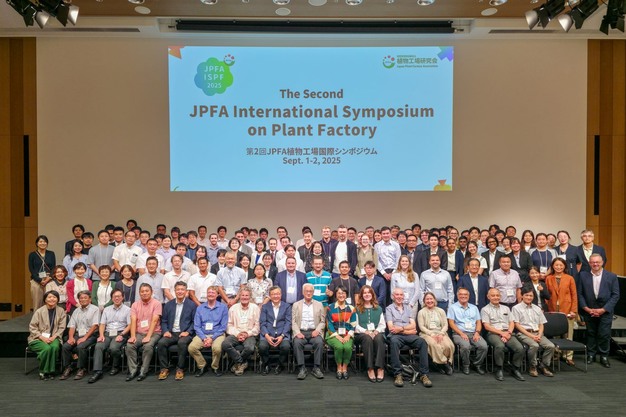 © Rebekka Boekhout | FreshPlaza.com
© Rebekka Boekhout | FreshPlaza.com
The JPFA Symposium participants of 2025
Closing the Symposium, Eri Hayashi, President of the JPFA, thanked all participants and was very excited to share that the third JPFA International Symposium on Plant Factory will take place in Chiba, Japan, from August 31 to September 1, 2026. Keep an eye out for the JPFA Symposium photo report, which will be live tomorrow, September 3rd.
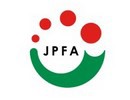 This article series is in collaboration with:
This article series is in collaboration with:
Japan Plant Factory Association
Eri Hayashi, President
[email protected]
www.npoplantfactory.org
